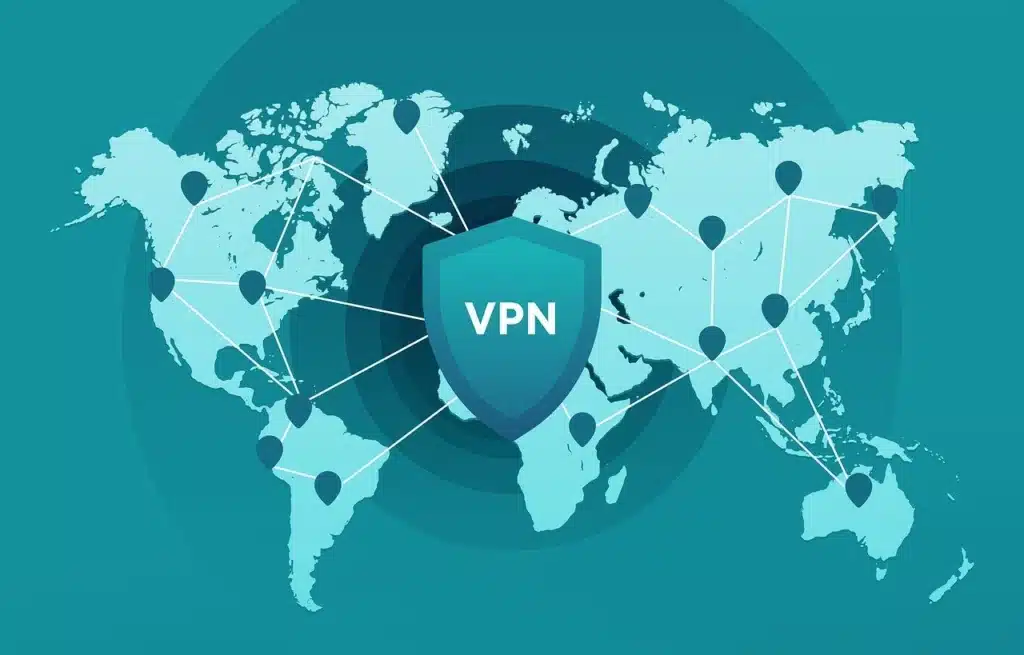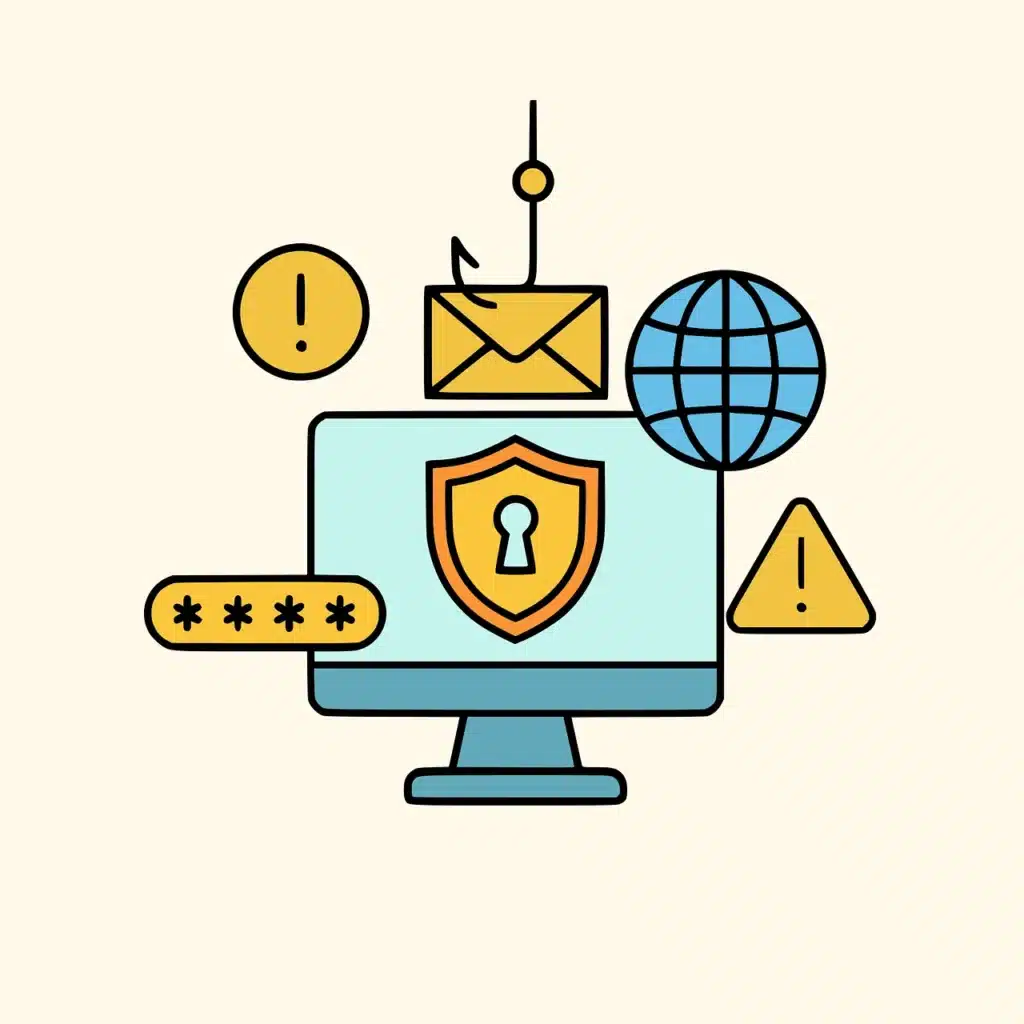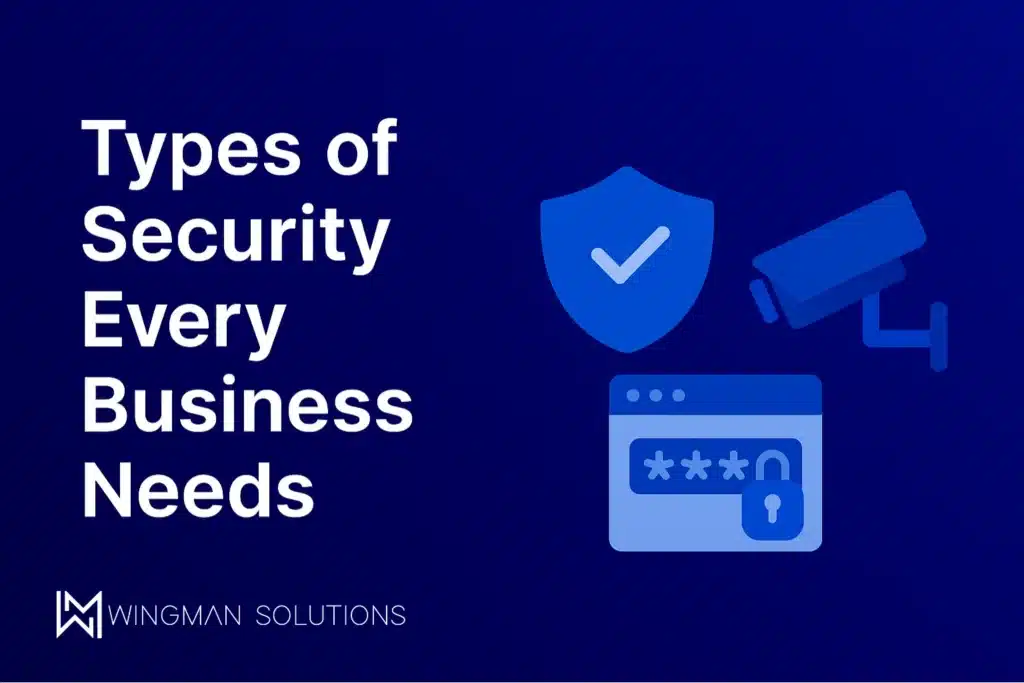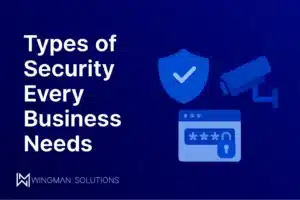Keeping your network secure is essential. As digital threats grow, knowing the different types of security your business needs helps prevent costly breaches. At Wingman Solutions, we see security as a layered ecosystem that combines firewalls, encryption, monitoring tools, and user training to keep systems resilient, data protected, and operations compliant.
By understanding how each layer works together, businesses can build a stronger, more adaptive defence that evolves alongside emerging cyber threats.
Network Security: One of the Core Types of Security

Network security protects the integrity and usability of your company’s infrastructure, from routers to servers and endpoints.
Key tools and strategies include:
- Firewalls and Intrusion Prevention Systems (IPS): Monitor and block suspicious traffic.
- Virtual Private Networks (VPNs): Secure remote access for employees.
- Segmentation: Divides networks into zones to limit lateral movement by attackers.
A strong network security setup stops unauthorized access before it reaches internal systems, keeping sensitive data safe from internal errors and external attacks.
Endpoint and Application Security
Endpoints, like laptops, smartphones, and tablets, are common targets for hackers. Protecting these devices is a must for any modern IT environment. Endpoint protection platforms combine antivirus, device control, and encryption tools to defend against data loss and cyber threats like malware.
Meanwhile, application security ensures your software and web apps are free of vulnerabilities. This includes regular patching, secure coding practices, and access management. Together, these types of cyber security solutions help keep every device and application on your network trustworthy and secure.
Data and Information Security

Data protection goes beyond passwords; it’s about maintaining confidentiality, integrity, and availability. Strong security strategies prevent data loss and legal liability.
This includes:
- Encryption: Protects stored and transmitted data.
- Access Controls: Ensures only authorized users can view or edit sensitive data.
- Backups and Disaster Recovery Plans: Help restore operations quickly after a breach or outage.
Combining these types of cyber security practices with ongoing monitoring keeps data safe from insider and external threats.
Identity and Access Management (IAM)
One of the most overlooked types of securities in many businesses is identity protection. IAM tools verify users and grant access only when necessary. Features such as multi-factor authentication (MFA), single sign-on (SSO), and role-based access control help prevent unauthorized logins and credential theft.
At Wingman Solutions, our IT specialists often remind clients that human error accounts for most breaches. Implementing IAM adds an intelligent layer of defence designed to reduce risks from human error and strengthen access control.
Cloud and Email Security
Cloud platforms and email accounts are prime targets for phishing, ransomware, and data theft. Using cloud security services to protect these environments is essential.
Cloud security includes continuous threat detection, encryption, and compliance management. For email, advanced spam filters and phishing training help users block malicious attempts.
Businesses that implement these different types of security measures often see a major drop in incidents from human error and credential compromise.
Managed IT Security and Continuous Monitoring

Even with strong systems in place, threats evolve daily. Continuous monitoring, vulnerability testing, and regular audits ensure your defences stay up to date. Partnering with a trusted provider like Wingman Solutions for Mississauga IT support can make all the difference.
Our cyber technicians specialize in proactive defence, patch management, and strategic planning to prevent costly mistakes before they impact operations. A managed IT approach keeps your security responsive, efficient, and compliant with industry standards.
Final Thoughts on the Different Security Systems
Every organization, large or small, needs multiple types of security to stay protected. By combining strong technology, smart processes, and user awareness, you can build a resilient network that defends against evolving threats.
At Wingman Solutions, we help businesses design and manage different security strategies tailored to their operations so they can focus on growth while we handle the protection.
FAQs: The Different Types of Security
How do the different security systems work together?
They create a layered defence known as “defence in depth.” If one layer fails, others remain active to protect your business.
What’s the difference between network and information security?
Network security focuses on infrastructure protection, while information security protects the data itself to ensure it remains confidential, accurate, and accessible.
Why is cybersecurity an ongoing process?
Cyber threats constantly evolve. Regular updates, audits, and employee training keep your security posture strong and adaptive.
Which types of cyber security solutions are most important for small businesses?
Small businesses should prioritize firewalls, antivirus protection, MFA, secure backups, and employee awareness training.




